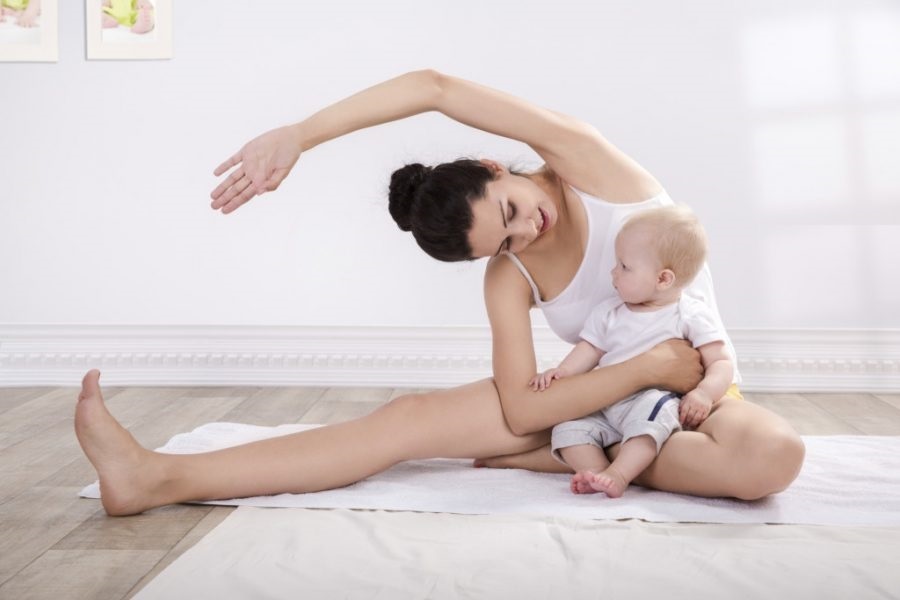Parent-child yoga, as the name suggests, is doing yoga with your child. Many mothers will complain that they don’t have time to exercise after giving birth, so why not choose to exercise with your baby? Sitting together in parent-child yoga can not only help mothers get back in shape as soon as possible, but also teach children the concept of healthy living. I think that in the future, the days of exercising with your children will also become your best memories and cherish forever.
What are the benefits of practicing parent-child yoga?
Parent-child yoga is a popular parent-child yoga in recent years, allowing parents and children to complete yoga movements together. Note that not only mothers, but also fathers can practice yoga together. Generally suitable for children aged 3-12 to practice with their parents, especially before the age of 7, it is a good time to learn yoga. In the process of learning yoga, it can shape the body and mind of children. Children are usually active and active. Yoga improves children’s attention and concentration. The child is still in the developmental stage, yoga can stretch the child’s muscles and bones, correct the child’s daily wrong posture, and cultivate the child’s internal and external temperament. The mother can do yoga to shape the body, soften the limbs, and achieve the effect of losing weight. At the same time, in the process of doing yoga with children, we can enhance our relationship with each other, allow each other to have more time to understand each other, and take this opportunity to understand the inner world of children.
How to practice parent-child yoga?
1) Wheel type:
a. Lie on your back on the mat, with your feet hip-width apart, bend your knees, place your heels on your hips, and point your toes straight ahead. Extend your hands back, palms under your shoulders, fingers pointing in the direction of your toes. Baoding lay prone on his mother’s chest and abdomen, with his hands and legs fully stretched, surrounding his mother. b. When inhaling, the mother pushes her body up from the mat with both hands and feet, so that the body forms a bow shape, and the head and neck naturally relax and sag. Pay attention to ensure the stability and safety of the baby. As you exhale, tighten your abs to stretch your lower back more comfortably.
2) Warrior II:
a. Mom spreads her legs and shoulders wide, and bends her right knee to ensure that her spine is straight and her body is stable.
b. The baby sits on the mother’s right thigh, the mother wraps the baby’s back with her right arm, and puts her right hand under the baby’s armpit to protect the baby’s body stability. c. When inhaling, the mother stretches the left arm, the baby stretches the right hip, fully stretches the chest and spine, and at the same time looks at the direction of the right fingertips.
d. When exhaling, while tightening the muscles of the waist, abdomen, buttocks, and legs, slowly parallel the thighs to the ground. Always keep your body in a steady state.
3) Lift type:
a. The mother lies flat on the ground, holding the baby with both hands, so that the baby’s body is on the calf.
b. Inhale, the mother lifts her upper body with her hands, the baby holds her mother’s shoulders with both hands, exhales, and leans back, looking upwards. Stay for 5-10 seconds. Slowly restore and adjust your breathing.
4) Parent-child dog style:
a. The mother lies flat on the ground, her legs are open and shoulder-width apart, and the baby sits on the mother’s waist and hips, breathing evenly.
b. Exhale, lower your legs, inhale, raise your calves as high as you can, back and forth several times, until your legs feel sore, numb and tired. Slowly restore and adjust your breathing.
It should be noted that if it is a relatively young baby, the mother should pay attention to the position of the child to prevent the child from being injured. If the child is more lively and active, the mother should pay attention to be more patient, do not scold the child for this, and communicate with the child more. In the process of practicing yoga, the test is not only for children, but also for mothers.


